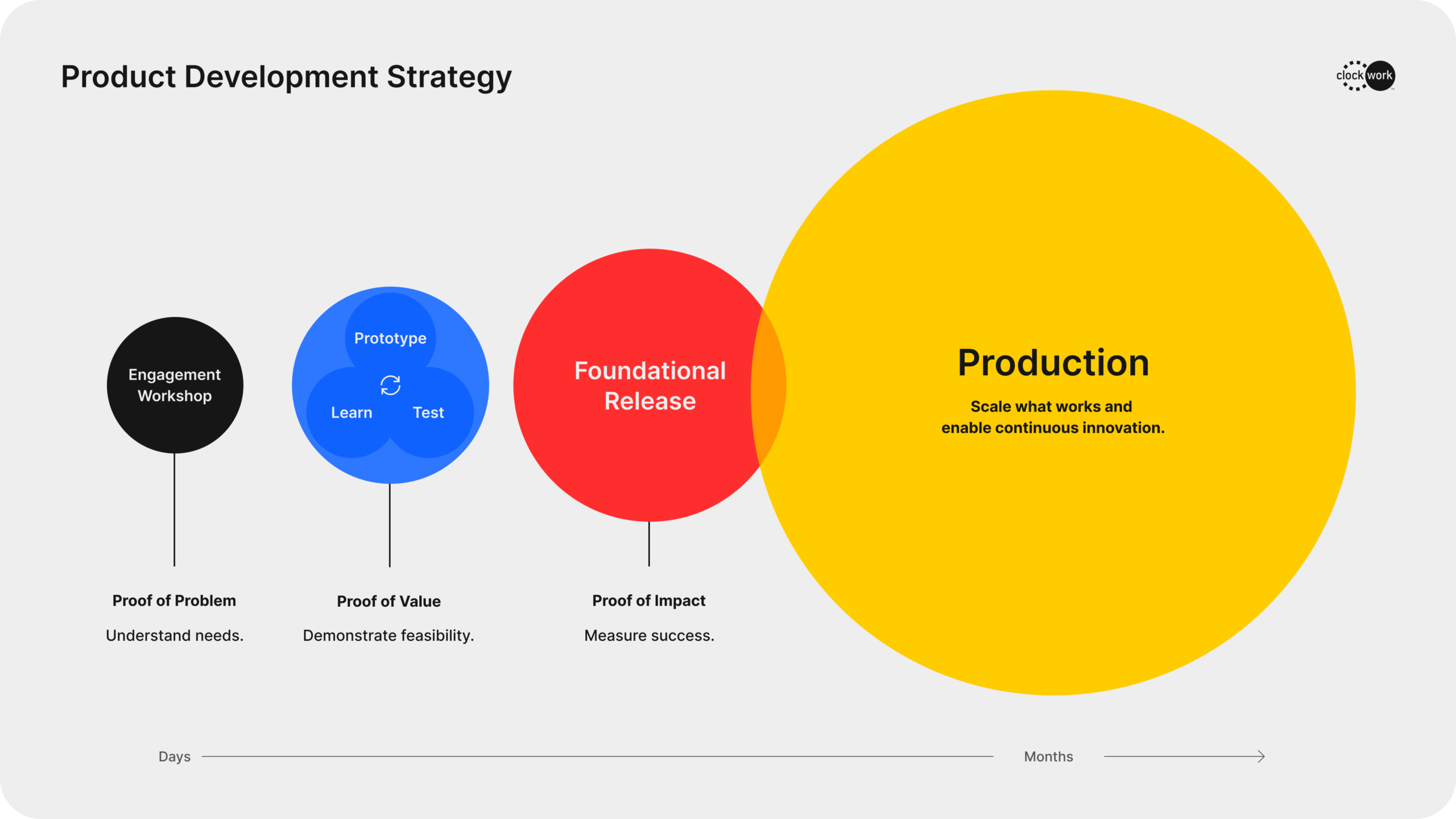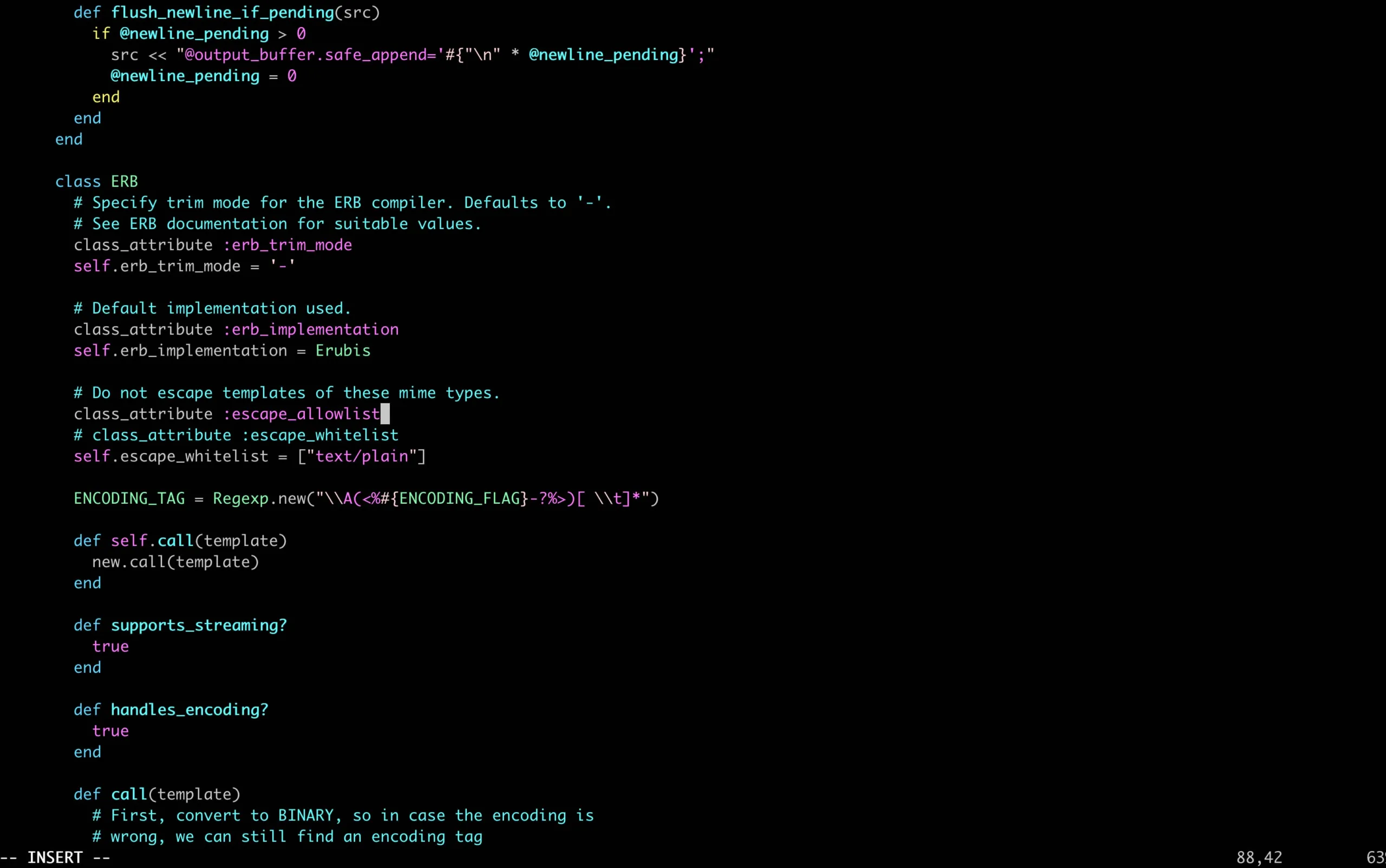This website uses cookies so that we can provide you with the best user experience possible. Cookie information is stored in your browser and performs functions such as recognising you when you return to our website and helping our team to understand which sections of the website you find most interesting and useful.
Category: CW POV: How we work
-
🕒 A Clockwork Minute: Cohesion without compromise

A one-minute look at work in motion. Welcome to our new regular series: A Clockwork Minute. In this series, we’ll be sharing snapshots of work in progress and how we’re solving problems real-time for our clients. We’re redesigning the website of a large Midwest county government, bringing County, Parks, and Library together under one roof.…
-
Why phasing matters in product modernization

Bad technology choices aren’t the reason most product modernization efforts fail. They don’t work because they try to do too much, too fast. When organizations rush to rebuild everything at once, it leads to overwhelm and false starts. Phasing breaks this cycle. It transforms modernization from a risky, all-or-nothing bet into a series of validated…
-
Start with the stakes, not the stack

Too often, teams get handed a tech-shaped solution before they’ve even agreed on the problem worth solving. There’s a diagram I always carry in my head. On one side: the people in the field, in the work, trying to move faster, serve better, or just make their lives easier. On the other side: the systems…
-
What does success look like?

One question we always ask clients who are starting off new digital initiatives is, “What does success look like?” Clearly defining success is essential to aligning teams on what we’re working towards, beyond simply making things better. It asks us to dig deeper into what better means. The three lenses of digital success Success extends…
-
Modernizing B2B products: A smarter path to impact

In this article What if your product isn’t keeping up? Sarah leads product development at a growing manufacturing company. She watches her field reps struggle with the same clunky software that worked fine five years ago but now feels like a relic. They spend more time fighting the system than serving customers. Sound familiar? Even…
-
How to unlock your data: middleware and custom solutions

The hidden challenge in enterprise tech Let’s be honest: most companies have a tech stack that resembles a digital junk drawer. Your CRM doesn’t talk to your data warehouse. Your sales tools live in their own universe. And somehow, critical information always seems trapped in the wrong system when you need it most. Sound familiar?…
-
Why program management is the digital leadership every enterprise needs

For 23 years, Clockwork has been in the trenches—engineering, UX, change enablement, and tech strategy—not just building digital ecosystems but leading them. Program Management isn’t just about managing projects—it’s about orchestrating the entire digital landscape. What is program management? Program management is the oversight, alignment, and strategic leadership that ensures technology serves the business, not…
-
Creating inclusive naming conventions in technology

In software development, we joke about the three hardest things being naming things, cache invalidation, and off-by-one errors. But for the first one, it’s no joke. We’ve been naming things wrong. Naming conventions are steeped in racism and patriarchy. Master, slave, blacklist, whitelist — these aren’t just words. They’re relics of a mindset we need…
-
When did Clockwork get in the change management business?

We’ve always been here. Our work is focused on transforming business by uniting people, processes, and technology around business solutions. Every time we work with a client to solve a business problem, we make sure they have what they need to train and support their people as they get used to their new technology — be it…
-
Why workshops are the perfect way to start a project

We’re all familiar with the Goldilocks story, right? As she walked through the house she came upon in the forest, she kept trying things out. There was always a version that was too much/big/hot and a version that was too little/small/cold. And then there was her perfect fit, right in the middle. Workshops are like…









